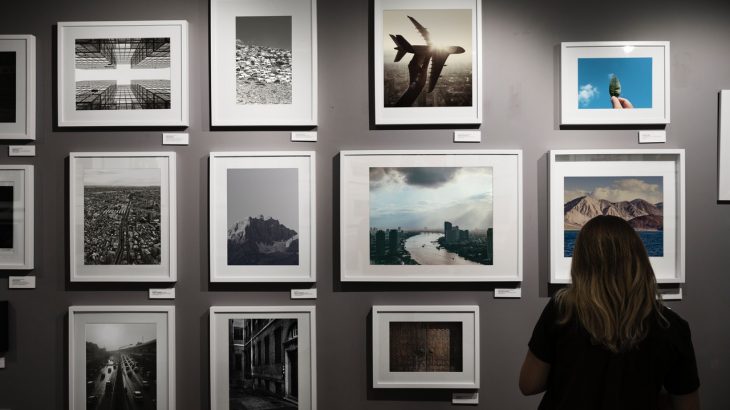Congratulations! You have an opportunity to exhibit your work and you want to be certain you’re ready. Following is a checklist to keep handy when planning to show your job. Notice that this information is focused on two-dimensional artwork, but a lot of it applies regardless of what medium you use.
- Your Artist’s Resume
 Like it or not, you must have a resume listing your artistic accomplishments available to the public when you’ve got an exhibition of your work. This is also a essential element of your website, blog or even your Facebook profile. Prior to your art show, make sure you have a big all day breakfast to prepare you for the mass of people who are going to walk into your exhibition.
Like it or not, you must have a resume listing your artistic accomplishments available to the public when you’ve got an exhibition of your work. This is also a essential element of your website, blog or even your Facebook profile. Prior to your art show, make sure you have a big all day breakfast to prepare you for the mass of people who are going to walk into your exhibition.
If you’re relatively new to this, an artist’s resume isn’t at all like a normal job resume where you record your address, date of birth, education, places you have worked and what you did there. Instead, you set the dates of your past display showcases including solo and group exhibits, any articles written about your work, honors, awards and grants you received, residencies you engaged in and some other honors you have received as an artist. Given there are individuals out there who think art educators and pupils aren’t serious artists, and a number of them run art galleries — you might choose to leave those details from your resume. Despite the fact that it has nothing to do with the quality of your work, listing your day job, whatever that may be, isn’t likely all that important to include on a resume for getting your work shown at exhibition installations.
Your display restart can take different forms depending on your experience. If you have had a whole lot of experience showing your job, but you have not been keeping track of the titles, places and dates, you need to start making the time to sort out those things. After that, get your experience on paper and online. Remember, having an artist’s resume is valuable PR for showing and selling your work. Even if you have a comprehensive background, consider your resume as an outline or capsule of your achievements, which match on one page as opposed to compiling a comprehensive list of your shows over the last ten years or so. Work on creating a business card design to hand out at your shows too.
- Artist’s Statement
Facing the dreaded artist statement is not a simple task. And, in my opinion, it is probably among the most hated professional responsibility artists need to grapple with! But no matter how hard it is to try to state what your artwork represents in a public statement, you cannot squirm your way out of this one. In a sense, you just need to grin and bare it.
Many times it is better to have someone write about your job from his or her view than it is to go it alone. And this procedure to an artist’s statement is totally fine. You’ll see this approach in catalogs produced for gallery displays where an art critic, historian or fellow artist writes about the work of the artist exhibited.
At least you will know that there are artists just like yourself who are Frustrated trying to express what they wish to say about their job. That is not to say writing an insightful and meaningful statement about your job isn’t feasible. Just make sure you keep it brief, honest and as clear as possible. Lengthy, floral and floral proclamations are doomed in the starting gate and will drive subscribers away. At the end of your speech, perhaps it would be a good idea to hand out some specially designed business stationary to leave your listeners with something they will not forget. Also consider handing out fresh food during your exhibition to keep your viewers satisfied.
- Framing Your Work
 In my view, one of the worse reactions somebody can have when viewing your artwork is to say, “I love the frame that you put on this bit.” Thank you, but did you happen to observe the painting in the center of the frame? If that’s ever happened to you, do not blame the viewer, but begin reconsidering your framing options. The frame you choose should present your work without drawing attention. In my view, you should not waste your money or time picking a mat or frame as you think it looks impressive.
In my view, one of the worse reactions somebody can have when viewing your artwork is to say, “I love the frame that you put on this bit.” Thank you, but did you happen to observe the painting in the center of the frame? If that’s ever happened to you, do not blame the viewer, but begin reconsidering your framing options. The frame you choose should present your work without drawing attention. In my view, you should not waste your money or time picking a mat or frame as you think it looks impressive.
Frame shops like to push unnecessary and expensive frills like ornate gold leaf information, museum glass and brightly coloured mats, which probably do more harm than good. Framers have a bottom line company to support. And, I admire that. But do not let them talk you into purchasing superfluous trimmings or anything too decorative that takes attention away from the artwork. Frames can be simple and elegant without hogging the stage.The concept of keeping the framework easy is not necessarily consistent with the job of museum and gallery directors who have to respect the roots of the artwork itself. By way of instance, many artworks depicting religious iconography from the Renaissance and Baroque periods were especially made to impress the viewer much as did the spectacularly ornate cathedrals that introduced these artworks for their parishioners.

